Woodturner's Gouges
A gouge is a chisel with a curved section and cutting edge. Woodturning gouges have the bevel ground on the outside only. They come in various styles and sizes. A general purpose set of woodturning gouges would include . . . .- Spindle Roughing gouge
- Spindle gouge
- Bowl gouge
Let us start with the roughing gouge. This is a large gouge with a shallow curvature and is used for initial cutting and shaping of wood held between centres including removing the corners from square stock.
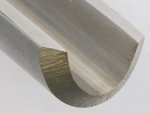
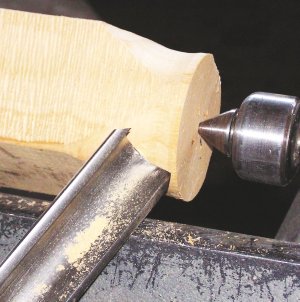 Say you are turning a chair rail from a length of 2 inch square section wood held between centres. In a matter of seconds you can remove the corners and take the material down to the basic flowing shape. On the shallow curves you could obtain a very good finish by taking a fine finishing "shearing cut".
Say you are turning a chair rail from a length of 2 inch square section wood held between centres. In a matter of seconds you can remove the corners and take the material down to the basic flowing shape. On the shallow curves you could obtain a very good finish by taking a fine finishing "shearing cut".
Do not try using a spindle roughing gouge for bowls. The large cutting forces would probably break the tool
Next you would want to cut some details in - some fancy beads and hollows known as mouldings. The roughing gouge is too big and clumsy for this so you use your spindle gouge.
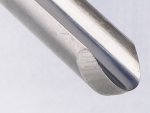
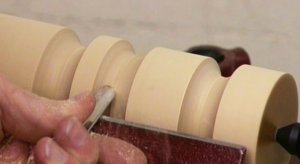
Spindle gouges have a pointed tip so they can cut into narrow details. The pointed shape is called a "fingernail profile".
Bowl gouges
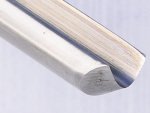 Bowl turning gouges are longer and stronger than spindle gouges and have a deeper flute section. They can shape the outside of a bowl and hollow the inside.
Bowl turning gouges are longer and stronger than spindle gouges and have a deeper flute section. They can shape the outside of a bowl and hollow the inside.

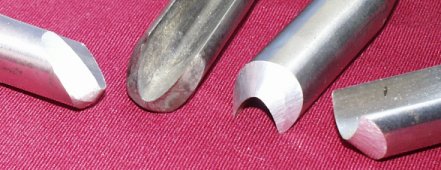
Bowl gouges can be ground in many different styles. They used to come ground straight across but more and more woodturners are using them with a pointed fingernail shape similar to the spindle gouge. The grind that works for you is the correct one
